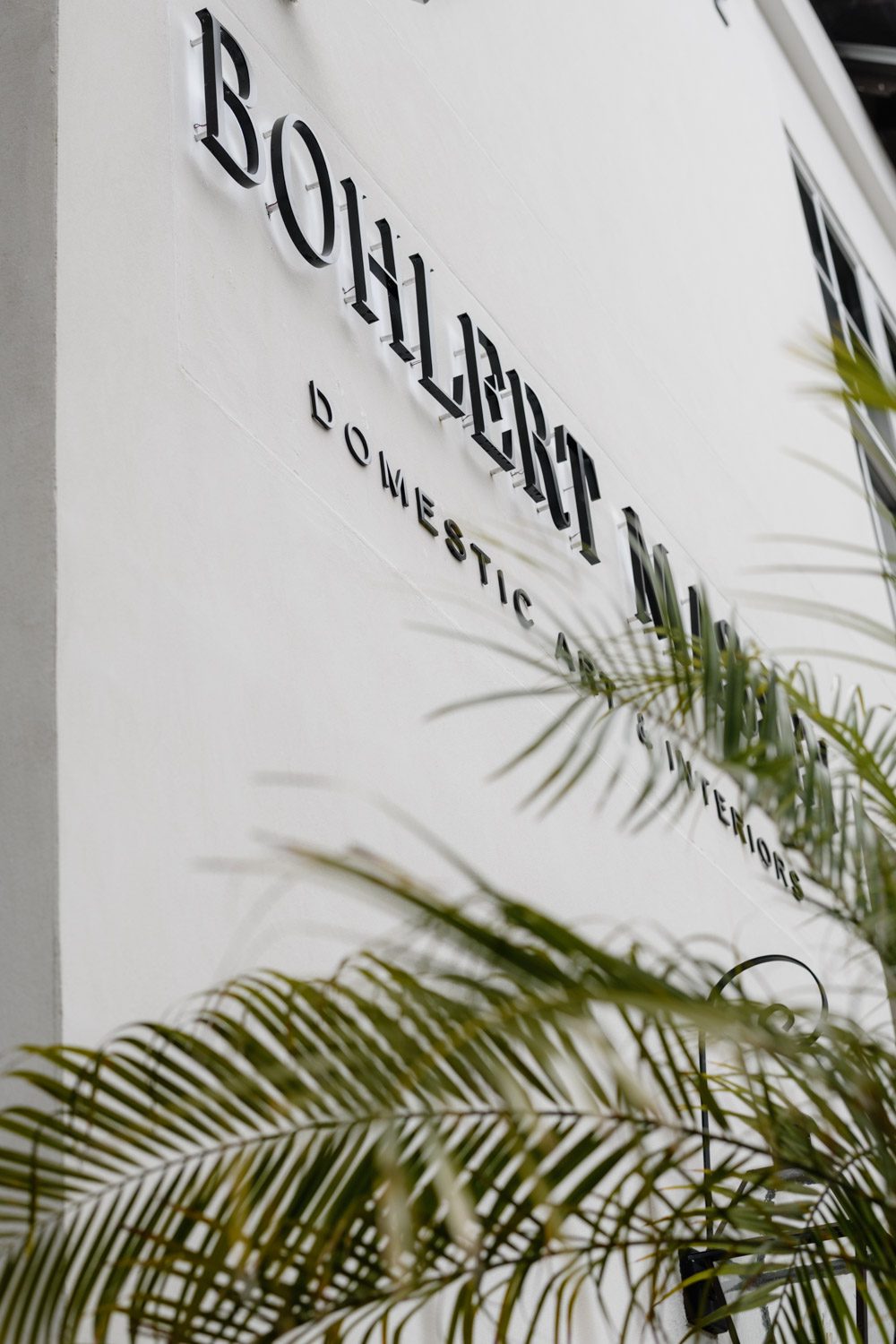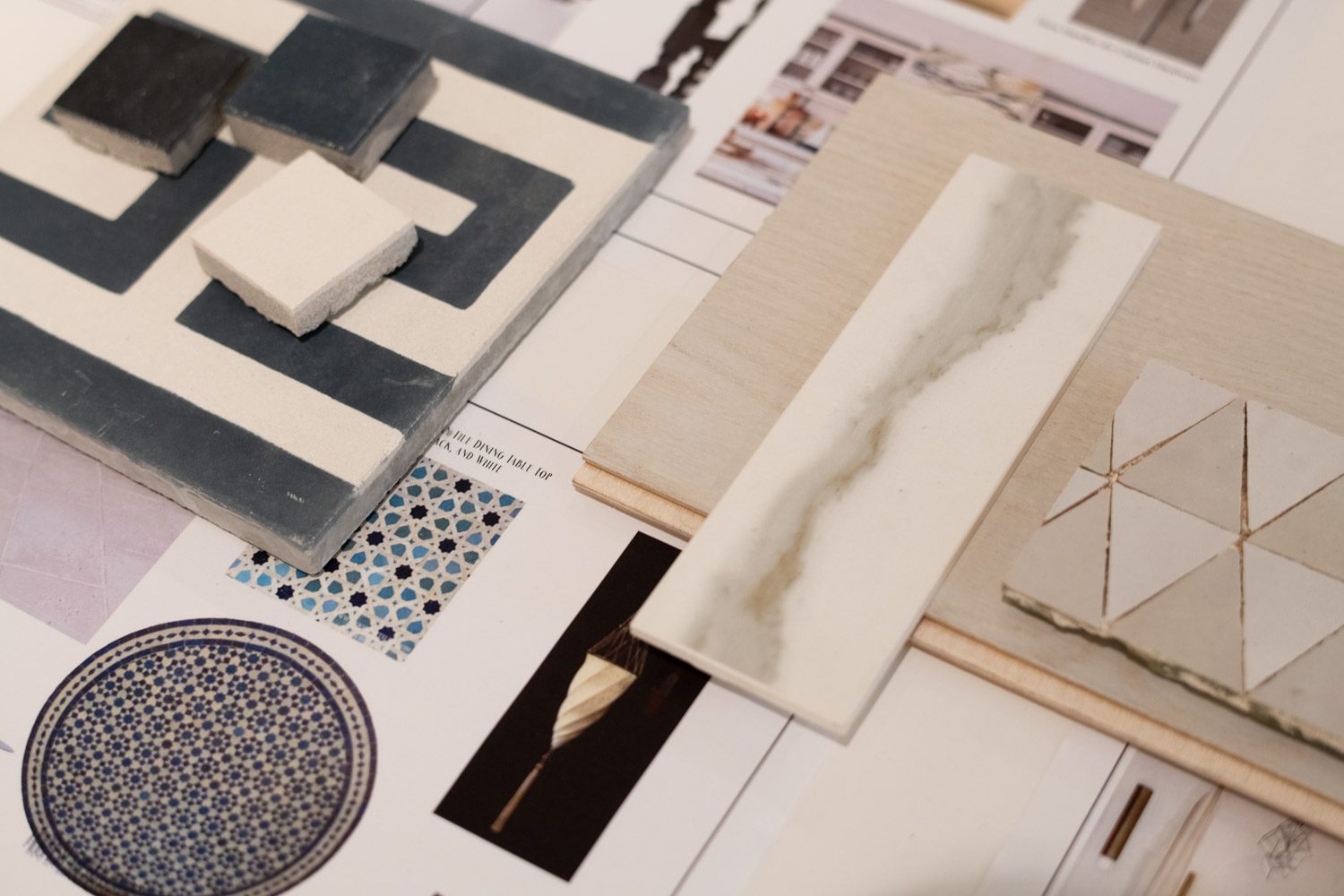For an hour and a half, I entered the universe of Susan Bohlert Smith and her daughter Bo, the design duo behind Bohlert Massey Interiors. There is a lot of laughter in their universe, a shared language I was allowed to engage with, a mutual respect and understanding that would leave many mothers and daughters envious. Shared aesthetics also, and shared goals, and a commitment to honesty to each other, their clients, each project they take on, that is refreshing and marked with integrity. I hated to end our call.
A word we kept returning to—story. The stories we tell ourselves and others that define our history; the stories that provide glimpses of who we hope to be; the stories told by the things we hold onto, the things we cherish, the things with which we surround ourselves. Susan and Bo are designers, but they are also storytellers. How can your home tell your story in a way that both showcases and brings out the best in you? This is what they seek to learn from their clients through listening and paying attention, and this is what they seek to give them in the end. A home with layers, that is not just one thing, and could never belong to anyone else.
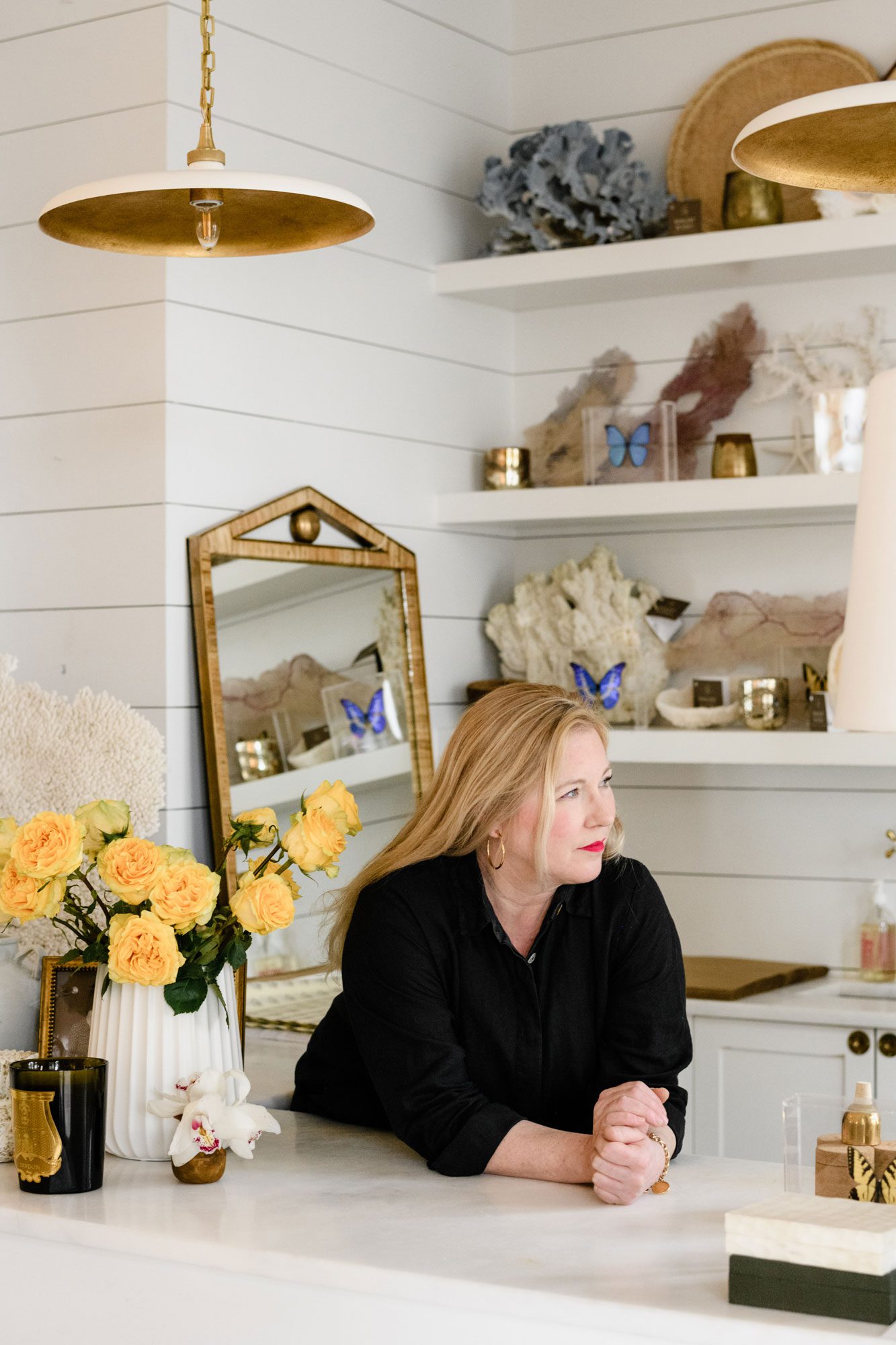

Cassie: So you work together. You started the business, Susan, and then you came on, Bo. Bo: We’ve been working together for four years now. Susan: I have had the business for a long time. When she was literally a baby, she would come to work with me a lot. And we had her own little area set up and she had her own desk and art projects. She has been around the whole business her whole life and thought she was a part of the design team at two. BM: I grew up in the studio, and coming to the office every day after school. And then as I got older, I would work over the summers. I would always work in our store and in the back office and help with things. When I was little, in elementary school, anyone in the office pretty much spent half of their time entertaining me. I was a distraction before I was a help. SS: She was a fun baby. She was brainy, beyond her years. We’ve always all called her a little old soul, so she just thought she was part of the team. She had her own little agenda and projects going on that everybody was really sweet about and catered to.
CC: Great. Nurturing those probably made it possible for her to come back and do what she’s doing. BM: I attended the University of Georgia. I double majored in English and Art History. I graduated, packed all my things up and came back straight back to the beach.
CC: Susan, I’ll pivot to you for a bit. Can you tell us about where you grew up? Anything about your childhood, early interests, influences, particularly how they relate to your life now as a designer? SS: I grew up in a small town in Alabama that’s an hour and a half from here, called Dothan. And there was not at that time much to do or much culture there. My family traveled a lot. We had a place here in this area, and we’d spend all of our summers here, and spring breaks and weekends. I felt like this area was my second home. I never planned to move back here. But somehow it felt very comfortable. And I loved that there was so much new energy, and new people, everything from artists who relocate here because of the beauty, to entrepreneurs and people wanting to start something fresh and new. It was an exciting time when I first moved here. Bo was one, so I’ve been a full-time resident here for 25 years now. I first started my design business here in Grayton Beach. That’s where my first office was. Then we had an opportunity to move farther down on 30A, which is right near Alys Beach. At the time it was just like living out in the country. I really liked this end because it was quiet. I was fortunate that this is where we planted because everything’s really grown up around us. Bittersweet—I’d like for it to slow down and be like it used to be on some levels, but it’s been really nice for our business to have such beautiful communities and homes built just right around us. It’s really easy to access all of our projects. Literally I can ride a bicycle to most of my projects. Which I don’t do (laughing). I always have tons of samples. I feel ridiculous driving my car around when I could easily walk, but I can’t carry all of those things.
CC: What about some influences growing up? SS: I had a mother who’s very interested in antiques. I grew up restoring and refinishing antiques with her. A lot of my friends did not want to come to my house on the weekends because Mother would put everyone to work. “Isn’t this fun, girls? Next weekend we’re going to polish a brass bed.” I also got an appreciation for aesthetics from traveling at a young age. I was fortunate enough to get taken to Europe and to see classic cities. I went to New Orleans because that was important to my parents for me to just experience that city. To New York at ages that would feel too young to some people. I think that has had a huge influence on me, just being exposed to some things different than what’s available in a small town. CC: It’s amazing the things you absorb at a young age. SS: I went to the University of Alabama. Another big influence was spending some time and studying in Florence, Italy. And that was just life changing. I had been in conservative Dothan, then conservative Tuscaloosa, Alabama, with lots of rules and worrying about things and social standing. It was a little oppressive for my personality. I loved it, I had fun in both places, but it just was not a fit for me. So going to Italy was a total mind-blowing experience. I got really interested in the old buildings and architecture there. I loved the combination of what was happening with these 16th-century buildings with old paintings, frescoes, murals that were left over time, and that sort of age and patina and history. And then the layering with modern furniture. That’s become more chic now, you see it more with social media, but at the time, I’d never seen anything like it. That had a huge impact on me. And then, my first job out of school when I graduated was in Santa Fe, New Mexico. I loved Georgia O’Keefe’s artwork. This was in the late 1980s, early 90s. I was just always intrigued by that area, had never been, and I just packed my car up and went out to Santa Fe and through personal connections began working for an interior designer on Canyon Road, which is a historical street. Layered on top of the other travel experiences, and the stint in Italy, and the age and tension and interest of that type of design, I then added on to it the whole Southwestern experience, which again, is mind blowing. The desert combined with mountainous areas. The architecture is just so unusual. Everything’s built out of adobe. It just looks like it grew out of the hillsides there and the mountains that are surrounding the town. And again, it was open and open-minded and free and artistic, but also steeped in history. I mean, it’s just rich. I was in heaven. And so those are probably my biggest influences that still are coming through now, 30 years later.
CC: Were you drawn to design at an early age, or did all of these experiences bring it out in you? SS: I was either going to be one of two things for forever. I was going to be an interior designer or a painter. And I’m kind of both. Interior design is more my vocation. And then painting is my avocation. I love both. I’ll do more painting one day when I retire, if I ever retire. BM: That’s my job. To create more time for her to paint. SS: And chasing my two nine-year-olds. I have nine-year-old twins, as well as Bo.
CC: One thing that you said struck me … you expressed gratitude for how much the 30A area has grown, but also a certain nostalgia for what it was. Everyone I’ve talked to who lives on 30A seems to feel that tension. SS: Anytime you’re somewhere really beautiful, and inspiring and peaceful, other people are going to start coming and discovering the area. I’m certainly not the first person to discover this area. I love that this end has grown up beautifully with these world-class developers— DPZ— and the amazing husband and wife who are the town architects, Marieanne Khoury-Vogt and Erik Vogt. CC: Yes, I had the pleasure of talking to them before for these pages. SS: They are amazing and amazing to work with. And, you know, they’re all visionaries. The founders of Alys Beach are visionaries to have even thought to do something as edgy as this. White is the new baseline now because Alys has influenced everybody so much. You’ll see all the way down to Destin that every building and house is being painted white. In the days before Alys, you’d see peach and yellow and brown. It is really interesting to me as a designer that it has had that much influence. CC: I mean even here, in rural Louisiana, that is the direction people are taking. SS: I truly credit Alys Beach with starting the wave of white. I saw it happening, before it got mainstream. As a designer, I’m paying attention to everything and noticing things that are happening maybe more quickly than others.
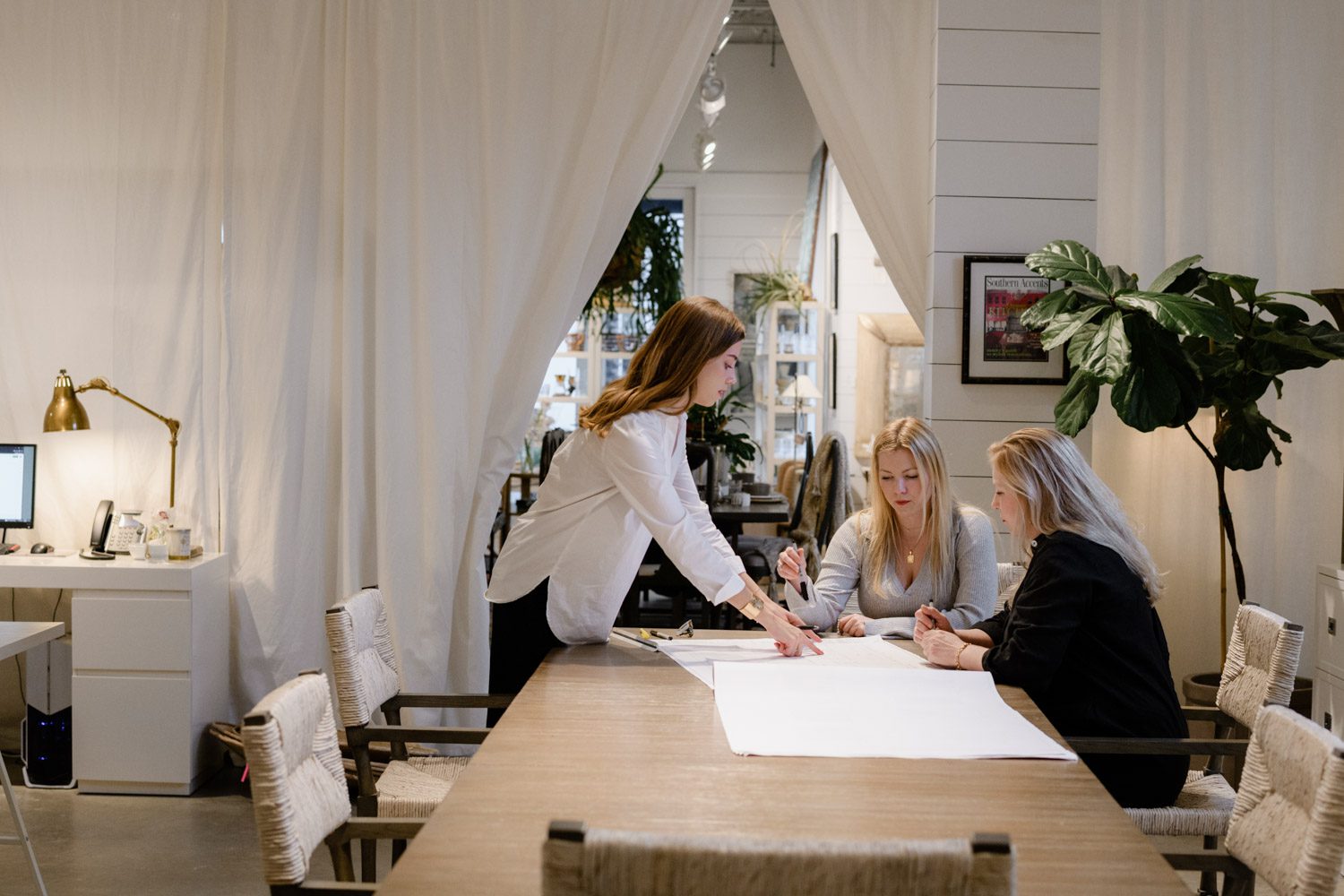

CC: Bo, how was it growing up that close to the beach? BM: It was wonderful. The house that she (Susan) still lives in is the house that I grew up in. It’s right between Rosemary Beach and Alys. So my entire childhood was riding my bike around Rosemary, Alys. Summer was spent with no shoes, alternating between beach and pool, beach and pool. And it was a really great opportunity to meet other kids from all over the country. I had friends with vacation homes here. I’d see them every spring and summer and we still keep in touch. So even though it was a small town, it felt bigger than it actually was. And there was just a lot of freedom growing up here.
CC: What does home mean to you? And what makes the place feel like home? SS: I would say that what feels like home to me is comfort, uniqueness to my family— my house doesn’t just look like whatever is popular at the time. I like to think that our home is fashionable with what we put in it, but it is definitely unique to us. Filled with odd pieces that we have, the artwork, the collections we collect. The rugs, I’ve had forever. Is it super beachy? No. But it works for us because we are full time down here. We’re not coming for a beach vacation. This is where we have Christmas, this is where we have Thanksgiving. And so I think home is just that comfort and being surrounded with things that we’ve had for a long time that we’ve collected over time. The place that feels good for us. CC: Things that have meaning. BM: We always try to create a sense of authenticity in every project that we do so that a home should reflect the life that is lived in it and the life of the person that lives in the home. SS: You should come into a home and get a sense or a feel of who that person is. As opposed to, if a client says— well, we may put it on the rental program, we may turn around and sell it as soon as it’s finished. We can help someone achieve that goal, but there’s something that’s a little sad to me about having to do something for some anonymous person. We really enjoy creating a unique look and environment for each client, so that the project means something to them, as opposed to just being monetary or something that’s just gonna get used.
BM: We’re also very sentimental people, maybe to a fault, because we both have a really hard time letting go of anything. SS: Bo is being nice about it right now—this is the first time she’s put herself in that category with me. I’m the one that says, “Oh these are your first drawings.” Bo says, “Why are you keeping that? We don’t need this.” BM: We have people come to us all the time who say, “Well, you know, I have some of my grandmother’s antiques, and I have some paintings and a chandelier that I just really love. But if you tell me that it’s not going to work, and we can’t use it, we’ll get rid of it.” For us, that’s the point—to create something out of things that are valuable and sentimental to you, because those are things that are important, right? SS: It’s a challenge to do that sometimes now that the trend throughout the country is everybody wants to be modern. I say, “We can do that, but now let’s think about some of the other things you’re saying to us that you want to incorporate.” I think we’re really astute at doing eclectic, but eclectic isn’t just a mash up of anything goes. That’s probably one of the hardest styles actually to do. And I think the term eclectic is sometimes misused. We are constantly challenged with how to figure out all of these different worlds and past lives. For example, the house may be very traditional, but they’re wanting to go more modern with furnishings. And we just have to take that and curate and literally smash it up, and then distill it down to something that we feel is unique to them. And that we’re proud of when we leave it. And it can’t be duplicated because there are all of these really cool, interesting elements. That’s one of our favorite things to do.
CC: I write fiction. So I really believe in story and the power of story. And it seems a little bit like that’s what you’re trying to say, too, is that … SS: We’re trying to tell the story of the family in its best light. So that it makes sense where they are. What’s the architecture? What’s, even, the wife’s coloration? Let’s say she has striking red hair—I’m thinking of a beautiful palette not only for what she should be wearing on her body, but also in the home because I want her to look her best at home. I want to make someone really happy through getting them to come around to the best of their tastes, the best of their aesthetic, the best of their lifestyle. And if someone allows us to, which a lot of people do allow us to, they are really happy in the end. And that makes me happy. We’re not controlling but we just give advice. We’re trying to guide them in their best interests. CC: Well, they hired you for just that. BM: We always start off telling our client that they’re kind of like our muse, and then we’re collaborating moving forward. But you saying that about telling the story? We do create a little story that the two of us talk about, that we try to stay focused on, because there has to be a narrative for the house. You have to think about, well, who lives here? And what are they doing in the house? How does it feel when you walk into the house? And that’s all part of that story that we try to develop. Each client is the character in that story. And sometimes that’s also an opportunity for someone to be a little bit of someone that they haven’t been before. So that’s also exciting. SS: Yes, be where they want to go, like if you were to do a vision board. Not to be false to yourself, not to say, “Well, we would never do that,” or, “We feel like that’s a little pretentious for our lifestyle.” But we will encourage someone to do some of those things that come out of their mouths. Because they should. It’s something that they would like to do and maybe they just need a little push.
CC: I imagine that when you are working on second homes, people probably get to express different sides of themselves. Have you found that to be true? SS: We try to encourage that, but you would be surprised. People are very much about comfort and what they know and what they’ve seen. Sometimes they’ll send us pictures of the house they live in to show what colors they like, the look they like. I say, well, that’s the city. And that is what you’re doing there in that city. Let’s do something for your beach house. Let’s do something that looks like this area. People too will want to do gold, because they see that gold is in, or something else that’s trendy. And I say we can’t make decisions based on what’s in right now, or what other people are doing. Let’s break out a little bit. We don’t have to do anything bizarre, but let’s do something tasteful and fresh and different. That’s where we really try to push. BM: What we always try to encourage is, what are the fundamental elements of your personality and style that are really important to you? Like, how casual do you like things to be? How much do you entertain? What type of entertaining do you do? SS: Are people in their flip flops and shorts and a golf shirt? Or are they wearing a cocktail dress? BM: And what are the things that you’re consistently drawn to? Things that you just love. And then we try to take all of that and then say, OK, this is how we can make that make sense in the location where we’re designing this house. These are the elements that do work, and then these are the elements that just don’t make sense, especially at the beach. SS: We are sort of cerebral about how we do design and the psychology of how we’re making someone feel. At the end of the day, we just want to bring them around to understanding what’s best for the project. I can’t tell you how many times people say, “Our last designer talked us into this, and I just should never have done it.” I never want somebody to say that. If there’s something that I feel somebody is not comfortable with, there are lots of other good ideas. BM: It’s very important to us for our clients to feel heard, and that we’re really incorporating their thoughts and opinions into the project. Because that’s how, at the end of the day, it feels like their house, and not like Susan and Bo’s house.
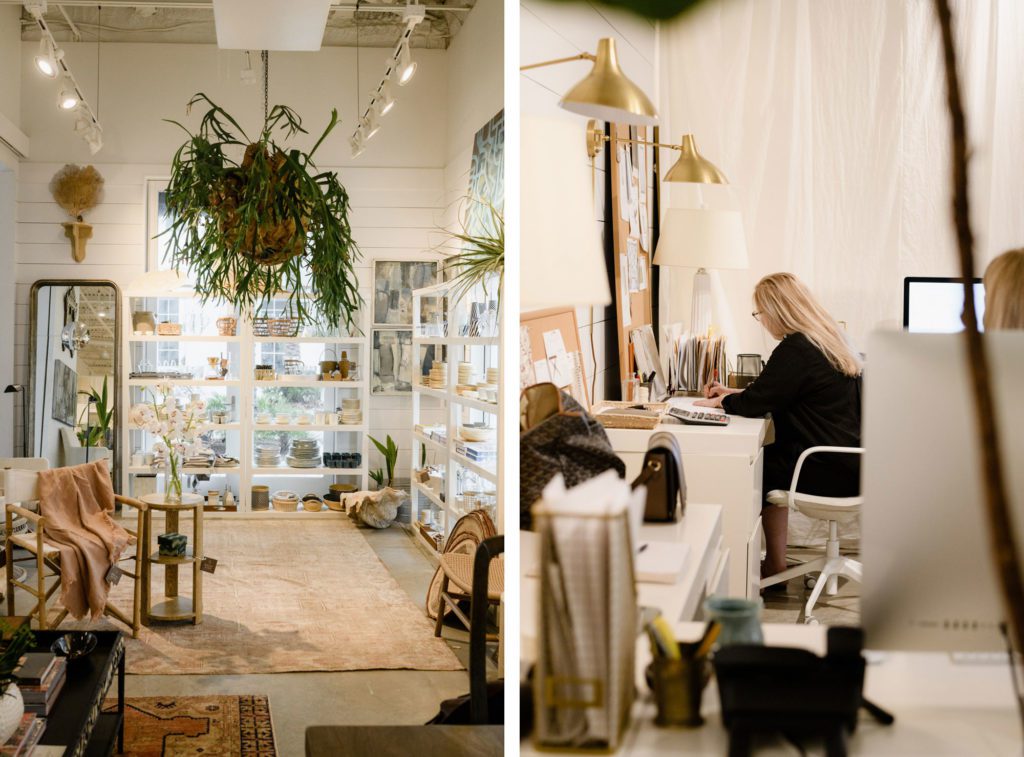

CC: I looked through some of your website, your images on your website, and I noticed a few things. I noticed texture, and then a mix of materials and even eras. When you said that about your mom and antiques, Susan, it made sense. You bring in antiques in really interesting ways. SS: It’s not necessarily appropriate for every job, but it’s an enjoyable facet. One, because my mother brings containers in through her contacts in the antiques world. BM, laughing: It’s a bit of a traveling circus. My grandmother imports containers from Belgium and France, and then she goes to the different shows like Round Top in Texas. She was just at the Nashville Antique and Garden Show. And all the same dealers are there. They camp out and they have parties. It’s really cute. They’re all friends. When I’m negotiating for price, I mention my Mimi; she’s quite popular.
CC: She’s probably right in line with y’all. So I can imagine that people find her very appealing. You do have a unique, intimate connection with another person, the homeowner, through this process. You mentioned listening, and noticing things about them, like the woman’s hair color, and what complements that. Is there anything else? Is that process pretty natural and intuitive in terms of getting to know them? Or do you have a questionnaire you give them? SS: It’s intuitive. Over time I just know the things that I need to know. We do have a questionnaire in the beginning of the process, but it’s really only when someone is inquiring about design services. We ask—Do you have your architect yet? Have you hired a builder yet? Do you have a lot yet? Because otherwise, it’s really premature. But that’s about the only type of questionnaire I think we would ever do. I don’t want it to feel like a doctor’s office.
CC: Can you say something about designing at Alys Beach? What’s it like to design a home there in particular, what’s special about the place? SS: We love to design in Alys Beach. It’s just such a beautiful environment, and there are a handful of vetted architects and builders who can work in there. We just know that those are going to be solid jobs. It makes our job a lot easier. CC: There’s a lot of value placed on beauty and simplicity. So you kind of already have parameters with room for creativity within those. BM: My mom has done so much work in Alys; she’s done probably 15 or so houses. And over the last few years, we’ve continued to do houses there and I think something that’s really interesting about Alys is that everyone is trying to define what the Alys Beach aesthetic is. We constantly have clients come to us and say, “Well, I love the Alys look.” But what’s funny is, when you’ve done so many houses, other than the white plaster, and the architecture for the exterior, you realize there isn’t one look for the interiors. Some people play off of some of the Moroccan details that started with Khoury-Vogt, but a lot of people don’t want to do anything Moorish or Moroccan. SS: They want it more organic with a lot of earthy textures, like a big seagrass rug. No color, no pattern. BM: And then we have people who want to do, like she said, a more eclectic mix with some antique, some modern furnishings, color. What’s so nice is that you’ve got beautiful architecture, you feel like you’re transported to another place, but once you go inside a home, it could be anyplace. Moroccan influences, Bahamian, preppy vibes, anything.
CC: Susan, tell me about painting. I often say that creativity begets creativity. So how do you use other creative outlets to help grow your gifts? SS: I personally just love to draw and paint. I am constantly doodling something. I also do a lot of drawings for our interiors. Obviously, we can have it all put on CAD. But I love to do hand drawings for some presentations, in tandem with the more structural, easy to email, easy to print out at scale. I think that’s representative of our design work too— we’re going to do some interesting things by hand like some renderings. So painting, drawing. I love to garden. It’s just good for my brain to put my hands in the ground BM: She has never met a dead plant that isn’t going to live again. She has a plant ICU. SS: I love, love, love, love to garden and, and I love growing flowers and seeing what will actually live that people tell me will not live in this area. I like to prove it wrong. Everything from pomegranates to bananas to figs. BM: We had a little bit of a garden of Eden when I was growing up. SS: As they need to be trimmed, I like to get branches which we do arrangements with. We sell fresh flowers and plants in the store mixed in with our interiors. Because that’s another layer that we love. We just love to make the house feel alive. BM (turns to Susan): Also, you’re a cinemaphile. She has watched every movie on the planet.
CC: What about you, Bo? SS: Podcasts! She loves podcasts. She picks on me all the time, so I have to pick on her about something. But actually I always want her to tell me what happened. She’s an avid reader. I like to look at the pictures and she reads to me. BM: I’m big into reading, listening to podcasts; music is a really big part of my life. Making playlists and things like that, which is kind of a funny thing, but I really love it. I’m really, really big into cooking. Probably my biggest hobby is cooking and experimenting with new recipes and things like that. SS: She has a sweet little garden at her house where she gets all her fresh herbs. Always something creative with her, though. BM: All of the music that I love is thanks to her. I mean, I’ve discovered stuff on my own that I share with her now, but she’s been brainwashing me since I was born so we like the same stuff. Music is a part of what we do, it goes back to the story and setting the scene and tone. We had an install, and at the end of it, we’re doing the walkthrough with the clients. And we’re like, OK, we have to put some music on while we have a drink and walk through the house. We ended up putting on reggae, and it’s just that perfect thing to walk through and just feel like you’re in another place. SS: Whether it’s music or buying for the shop or in a design project … There might be a piece that I really love, and she’s like, ummmm, and I say, No, it’s fine, if you don’t like it. And then she’ll share what she likes and I’m like, ummmm… And then if it’s one that we both like, it’s like, OK, that’s a winner. I’m steeped more in tradition and experience, where she’s a little edgier, more youthful—what’s current, what’s fashion forward without being trendy? BM: It’s important to us to try to pay attention to, like she said, fashion forward, but not to pay attention to trends, because as soon as you start paying too much attention to trends, you’re not doing your own thing. Then you follow that trend. Well, there’s always going to be another trend. So you’re going to be trying to catch the newest trend and you’re always going to be behind. SS: And it’s too heavily influenced by others. It’s just not an authentic process for us. I actually don’t even subscribe to design magazines.


CC: So how do you start your day? Do you have a ritual, either of you, that you do no matter what? SS: I’ll say coffee. It should be a run. My New Year’s resolution was to do what I love to do, which is just to walk down the steps and take my morning walk on the beach. Yet my morning routine is getting up and scrambling, trying to do as much as I can, wrangling two monkeys and trying to get them dressed in something that is acceptable to me, get them breakfast, and get them off to school. One day, I would like to be able to do my exercise or yoga first thing in the morning, but I am having to do that after drop off, so, you know, I get my start a little later in the day, but that’s OK. BM: Coffee for me, too.
CC: Let’s say you have a perfect afternoon. What cocktail are you drinking? Where are you? SS: I would say a perfect afternoon would be walking down onto the beach for the cocktail. And I would say my favorite cocktail right now, you can’t drink a lot of them because it’s a little sweet and I normally do not like sweet at all, but I love a hummingbird which is prosecco or Champagne with elderflower liqueur. St. Germain. That’s a nice little light cocktail that just tastes good, feels good. I also love a cucumber martini. Just have my feet in the sand. Watch the water. That’s perfect for me. And also, I like when Bo has time to spend with me. I always ask her to spend the night with me. I’m cooking tonight! BM: I’m like, we spend all day together. CC: That’s really so cute. Were you always this close? Together: Yes.
BM: It’s also funny because we look a lot alike. Especially since I’ve been working here, people get confused because they think that I’m her at first. We’re best friends. Even though we talk about how we have to be self-aware enough that we don’t become Big Edie and Little Edie from Grey Gardens. SS: Especially when she calls me a hoarder. CC: I would keep an eye out for that. SS: We come in and we’re both wearing the same earrings and have our hair in buns and we’re dressed alike. BM: And we say that’s just too much. Really we just try to be very honest and very respectful with each other. SS: We try to be honest with each other without taking anything personally so that we can remain this close.
CC: It’s definitely communication. But y’all seem to be excellent communicators. So I wish you the best, but I don’t think you need any luck. I enjoyed this so much, y’all are a blast. SS: Well, thanks, Cassie. You made it easy. CC: Enjoy your afternoon. I hope you end up with feet in the sand and a hummingbird in your hand.




